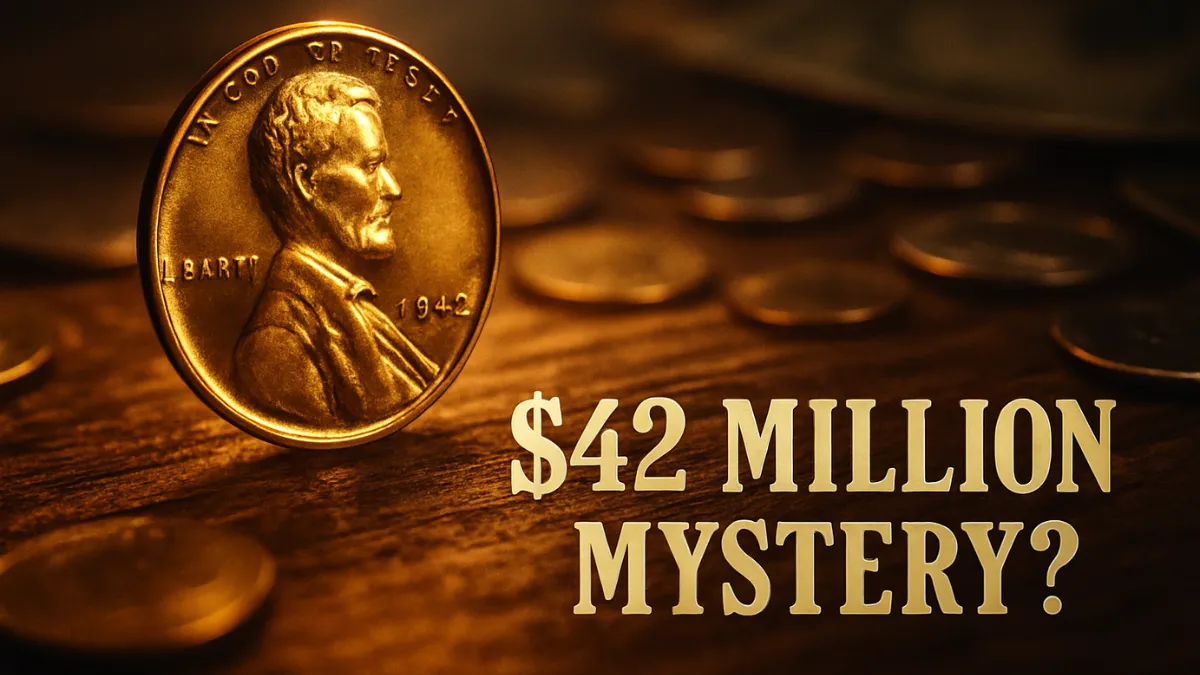What might seem like just an ordinary penny could, under rare circumstances, turn out to be a collector’s dream. The Lincoln Wheat Penny, often overlooked in spare change, has occasionally emerged as a numismatic treasure.
Recently, one such coin stunned collectors and investors alike when it was valued at an astonishing $42 million—transforming this once humble cent into a legendary artifact in the world of rare coins.
Origins and Design of the Lincoln Wheat Penny
First introduced in 1909 to commemorate Abraham Lincoln’s 100th birthday, the Lincoln Wheat Penny quickly became an iconic piece of American currency.
Its obverse (front) showcases a portrait of President Lincoln, while the reverse features two stylized wheat stalks surrounding the denomination “ONE CENT” and the phrase “UNITED STATES OF AMERICA.” This design remained in use until 1958, making way for the Lincoln Memorial reverse the following year.
Despite the billions minted during its nearly 50-year run, only a select few have unique characteristics that elevate their value dramatically.
What Makes the $42 Million Penny So Extraordinary?
The coin that reached the $42 million valuation is believed to be one of the fabled 1943 copper cents. During World War II, copper became a vital wartime resource, prompting the U.S. Mint to produce pennies from zinc-coated steel that year.
However, due to a rare minting oversight, a few leftover copper planchets from 1942 were accidentally struck in 1943. These error coins—intended to never exist—are now among the most coveted in numismatic circles. Their extreme rarity, combined with their accidental origin, makes them historically and financially significant.
Why Is This Penny So Valuable?
Several factors contribute to this coin’s jaw-dropping valuation:
- Uncommon Rarity: Only about 20 verified examples of the 1943 copper penny exist today.
- Pristine Condition: The coin valued at $42 million is said to be in mint-state condition—untouched by circulation and virtually flawless.
- Historical Relevance: These coins symbolize a unique intersection of American history and wartime necessity, enhancing their appeal.
- Collector Demand: In rare coin markets, scarcity and demand drive up prices, and few coins generate as much excitement as a 1943 copper penny.
Other Highly Valuable Lincoln Wheat Pennies
While the 1943 copper penny takes center stage, many other Wheat Pennies also command high prices:
- 1909-S VDB: Featuring the initials of designer Victor David Brenner, this version is a staple of high-value collections.
- 1922 “No D”: An error coin from the Denver Mint that lacks its expected “D” mintmark.
- 1914-D and 1931-S: Both are scarce due to low mintage numbers and are highly sought after by enthusiasts.
How to Spot a Valuable Wheat Penny
You don’t need to be an expert to start searching for rare pennies—just a keen eye and some basic tips:
- Check the Date: Years like 1909, 1914, 1922, 1931, and especially 1943 are worth examining closely.
- Look for Mint Marks: Letters like “D” (Denver) and “S” (San Francisco) can indicate lower production numbers.
- Inspect for Errors: Misstrikes, off-center designs, or unusual metals often point to valuable mistakes.
- Use a Magnifying Glass: It helps to spot subtle details and imperfections that increase a coin’s worth.
Are Valuable Pennies Still Out There?
Surprisingly, yes. Rare wheat pennies still turn up in circulation from time to time. Although finding a multimillion-dollar specimen is extremely unlikely, coins worth hundreds or thousands do occasionally slip through the cracks.
Forgotten coin jars, inherited collections, and pocket change are all potential treasure troves for the watchful eye.
Taking Care of Your Pennies
If you come across a coin that might be valuable, proper handling is essential:
- Handle by the Edges: Oils from your fingers can damage the coin’s surface.
- Avoid Cleaning: Cleaning can diminish a coin’s value significantly.
- Seek Expert Opinions: Professional numismatists or reputable coin dealers can authenticate and appraise your finds.
- Store Safely: Use protective cases or holders to preserve the coin’s condition over time.
Why Coin Collecting Endures
The allure of coin collecting goes beyond potential profit. It’s a journey through history, design, and human stories. Each coin captures a moment in time—reflecting economic, political, and social elements of the era in which it was made.
Whether driven by passion, nostalgia, or investment potential, coin collecting offers rich rewards for those who appreciate the details.
The Hidden Value in Your Pocket
The story of the $42 million Lincoln Wheat Penny serves as a reminder that incredible value can hide in the most unsuspecting places.
While most wheat pennies are worth modest premiums, the possibility of discovering a true rarity keeps the excitement alive. So the next time you receive change, take a moment to look—there could be a small piece of history waiting to be found.
Disclaimer
This article is for informational purposes only and reflects general trends in the numismatic market. Values of collectible coins can fluctuate and are influenced by rarity, demand, and condition.
While some coins may hold exceptional worth, most wheat pennies remain low in value. Always consult a professional appraiser or numismatic expert before making any decisions regarding buying, selling, or investing in coins.
FAQs
What makes the 1943 copper penny so valuable?
Its extreme rarity, historical significance, and minting error make the 1943 copper penny one of the most valuable U.S. coins ever made.
How can I tell if my wheat penny is valuable?
Check the date, mint mark, and look for minting errors. Rare years like 1909, 1914, 1922, and 1943 are especially worth closer inspection.
Are valuable wheat pennies still in circulation?
While rare, valuable wheat pennies occasionally appear in pocket change or old collections. It’s always worth checking your coins carefully.
Should I clean my old coins to improve their value?
No—cleaning coins can reduce their value significantly. Collectors prefer coins in original condition, even if they show signs of age or wear.
